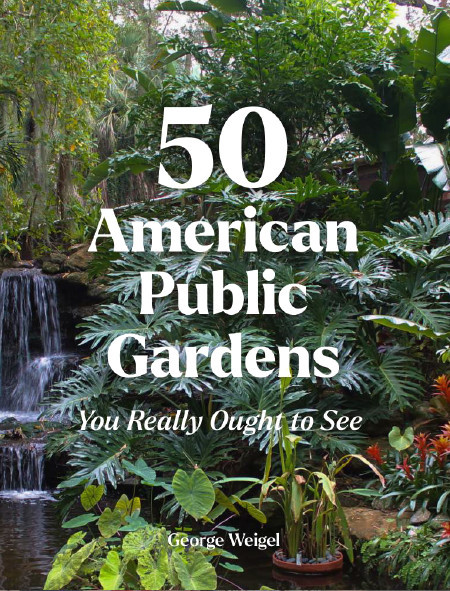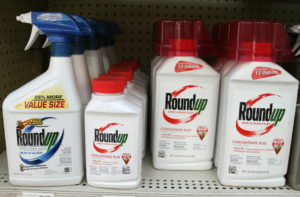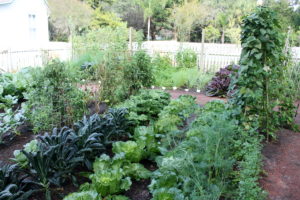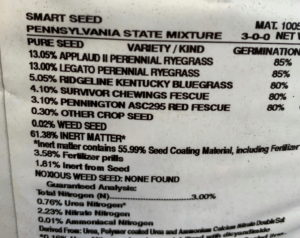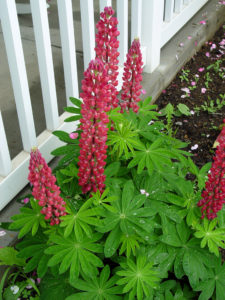Bringing Back My Zombie Lawn
September 14th, 2021
Last year at this time, I was laboring behind a heavy, gas-powered dethatching machine, tearing up the remnants of a dead front lawn.
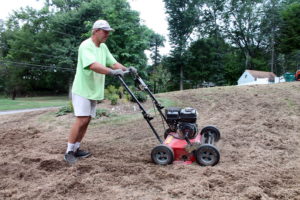
Here I am digging up dead turf with a dethatching machine last September.
Nearly the entire quarter-acre of thatch-infested grass died following weeks of punishing late-summer heat and no rain.
I’d never lost that much grass before, and I had to reseed and water, water, water the whole wretched expanse.
My GreenView blend of Kentucky bluegrass, perennial ryegrass, and fine fescue came up nicely and looked reasonably good by late fall and into this spring.
But when summer heat returned, I ended up with a thin lawn infected with red-thread disease and outbreaks of crabgrass, nutsedge, and a host of broad-leaf weeds (oxalis, clover, plantain, dandelions, spotted spurge, etc.)
After a dry spell in August, my zombie lawn was looking sickly, brown, and weedy.
I thought I’d share what I’m planning to do next since 1.) these setbacks are fairly common when starting or replacing a lawn, and 2.) many of you no doubt have struggling lawns, too.
After all, this is the best time of year to do something about it all.
I should first mention that I’m not a lawn fanatic who’s shooting for that perfect green carpet.
I’m also not a fan of the big lawn I inherited. A quarter-acre of it is more than I would’ve wanted, and if I were 20 years younger, I’d be replacing the majority of it with garden beds so that the lawn served merely as the paths between the beds, as was the case at my previous Cumberland County home.
My new lawn in the Pittsburgh suburbs is a problem child for several reasons.
One is that the underlying soil is rock hard – a compacted, sluggish, blackish clay that looks like something on the way to becoming coal.
Another is that the lawn is on a busy traffic corner (asphalt on two sides) and has sloping east- and south-facing exposures.
That means it’s a site getting extra heat and hot summer breezes from the roads and cars and is getting maximum-sharp rays from the afternoon sun.
Those roadside perimeters also are getting road salt from winter plowing, which amplifies the effect of summer dryness on grass roots.
On top of that, the lawn has a history of neglect bordering on abuse – information I picked up from neighbors.





